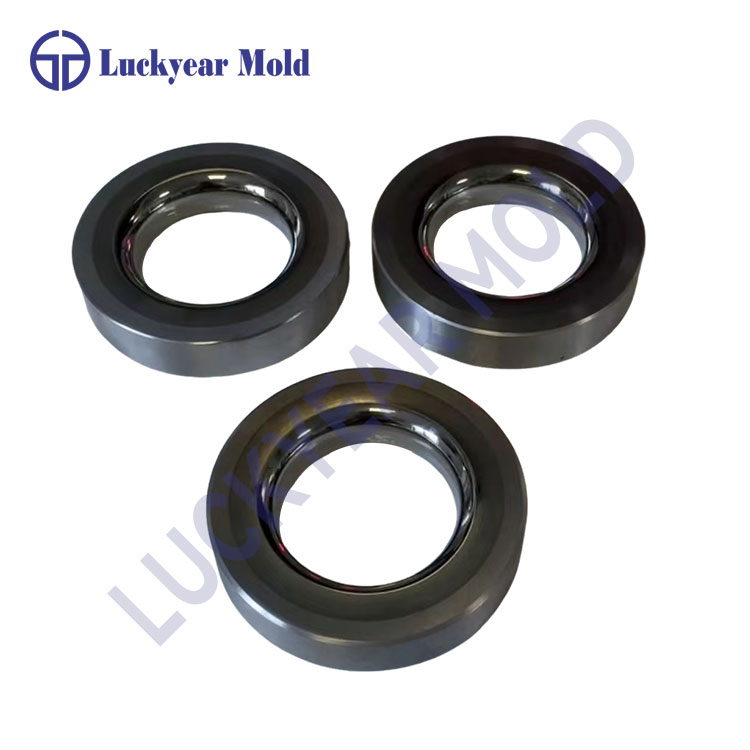The Essential Role of Carbide Standard Dies in Modern Manufacturing
2025-01-20
In the world of precision manufacturing, efficiency, durability, and high performance are paramount. Carbide standard dies have emerged as one of the most critical components in achieving these objectives. These tools are designed to shape, cut, and form materials in various manufacturing processes, and they have revolutionized industries such as metalworking, automotive, electronics, and more. In this blog post, we'll delve into what carbide standard dies are, their benefits, applications, and how they contribute to modern manufacturing.
What Are Carbide Standard Dies?
Carbide standard dies are precision tools made from tungsten carbide, a highly durable and heat-resistant material. Tungsten carbide is a metal alloy composed of tungsten and carbon, and it is known for its extreme hardness (second only to diamonds). Carbide dies are used in a wide range of manufacturing processes where high precision and longevity are crucial, such as stamping, forging, and extrusion.
The term "standard die" refers to dies that are designed to meet common, widely accepted specifications within a specific industry or application. These dies come in various shapes and sizes to accommodate different manufacturing needs, and they can be custom-made to meet the exact requirements of a given production process.
Key Benefits of Carbide Standard Dies
1. Incredible Hardness and Wear Resistance
Tungsten carbide is one of the hardest materials known to man, which makes carbide standard dies highly resistant to wear and tear. This resistance is especially important in high-volume production environments where tools are subjected to constant friction and stress. Carbide dies can withstand the rigors of repetitive use without wearing down quickly, resulting in longer tool life and less frequent replacements.
2. High Heat Resistance
Carbide standard dies can tolerate extreme temperatures without losing their structural integrity. This makes them ideal for manufacturing processes that involve high heat, such as metal stamping, forging, and extrusion. Even in high-temperature environments, carbide dies maintain their sharpness and precision, improving the efficiency of operations.
3. Precision and Accuracy
The precision of carbide standard dies is unmatched. Their high hardness allows for the creation of intricate designs with exceptional accuracy. Whether used in the production of metal components, automotive parts, or electrical components, carbide dies ensure that every part meets stringent quality standards.
4. Reduced Maintenance Costs
Because carbide dies are highly durable, they require less maintenance compared to dies made from other materials. This reduces downtime and maintenance costs, resulting in improved productivity and profitability for manufacturers. The long lifespan of carbide tools also means fewer replacements, reducing the overall cost of tooling.
5. Corrosion Resistance
Carbide materials also offer excellent corrosion resistance. This makes carbide standard dies suitable for use in industries where the tools may be exposed to harsh chemicals, moisture, or other corrosive substances. The ability to resist corrosion increases the longevity and performance of carbide dies in such environments.
Common Applications of Carbide Standard Dies
1. Metalworking and Stamping
One of the most common applications of carbide dies is in the metalworking industry, particularly for metal stamping and cutting. Carbide dies are used to punch, shear, or form metal sheets into specific shapes or components. These dies are crucial in industries such as automotive, aerospace, and electronics, where precise metal parts are needed.
2. Extrusion Processes
In extrusion, materials such as plastic, rubber, or metal are forced through a die to create long shapes, such as pipes, rods, and profiles. Carbide standard dies are highly effective in extrusion processes because of their ability to withstand the high pressures and temperatures involved. This makes them an essential tool in industries that require large quantities of extruded materials with consistent quality.
3. Forging
Forging involves shaping metal using compressive forces, often at high temperatures. Carbide dies are frequently used in this process because of their resistance to high heat and their ability to maintain sharpness even under extreme pressure. Forged parts, such as gears, bolts, and shafts, require precision, and carbide dies are key in achieving this level of accuracy.
4. Wire Drawing
Carbide dies are also used in wire drawing, where metal wires are pulled through a die to reduce their diameter. Tungsten carbide dies are ideal for this application because they provide the necessary hardness and smooth surface finish to draw the wire without excessive wear, ensuring uniformity and high-quality output.
5. Plastic Molding and Injection Molding
Carbide standard dies are also used in plastic molding and injection molding processes, where they help in forming plastic products by injecting molten plastic into molds. The durability and precision of carbide tools ensure that the molding process runs smoothly and that the resulting plastic products meet the required specifications.
Carbide Dies vs. Other Die Materials
While carbide standard dies are highly effective in various manufacturing processes, they are not always the best choice for every application. For example, for certain low-precision or low-volume tasks, dies made from other materials such as steel or aluminum may be sufficient. Carbide dies are more expensive than their steel counterparts, but the cost is justified by their extended lifespan, high performance, and ability to withstand tough conditions.
Additionally, carbide is more brittle than steel, so carbide dies need to be carefully handled to prevent cracking or breaking under impact or shock loading. Despite these considerations, the benefits of carbide dies in terms of precision, wear resistance, and longevity make them the go-to choice for high-performance applications.
The Future of Carbide Standard Dies
As industries continue to demand higher precision, faster production speeds, and more complex designs, the role of carbide standard dies will continue to grow. Innovations in carbide technology, including coatings and new alloy compositions, are constantly evolving to enhance the performance of these tools.
Moreover, as sustainability becomes a more significant concern in manufacturing, companies are looking for ways to improve the recyclability of carbide tools and reduce their environmental impact. Advances in green manufacturing practices and recycling technologies could further extend the lifespan of carbide standard dies and contribute to a more sustainable industry.
Conclusion
Carbide standard dies are indispensable tools in modern manufacturing, offering unparalleled hardness, heat resistance, precision, and durability. Whether it's metalworking, extrusion, forging, or plastic molding, carbide dies ensure that manufacturers can produce high-quality parts with greater efficiency and lower maintenance costs. While the initial investment may be higher, the long-term benefits of carbide standard dies make them a crucial asset for industries that demand the best performance.
As technology continues to evolve, carbide dies will likely become even more advanced, enabling manufacturers to meet the growing demands of innovation, precision, and sustainability.



